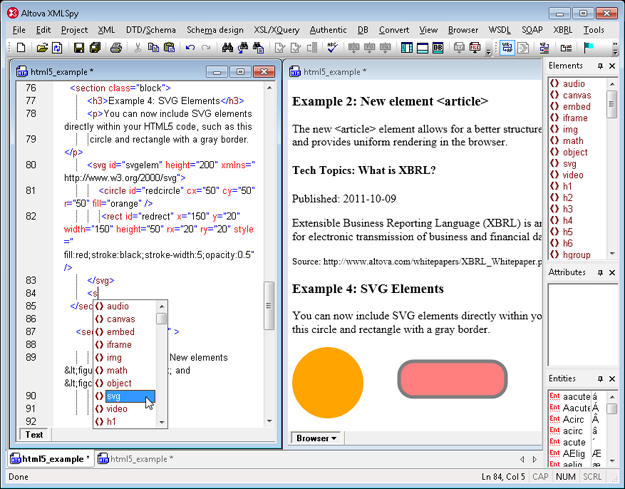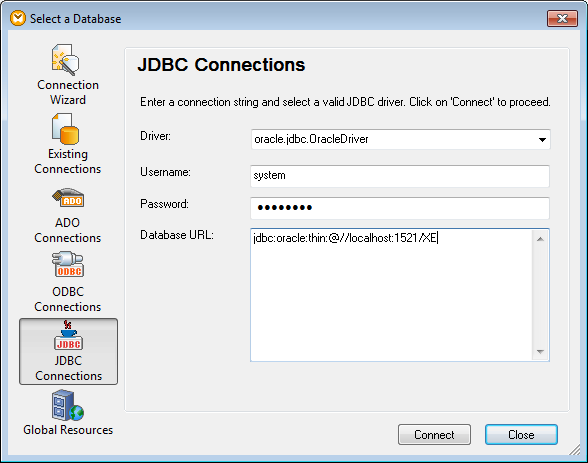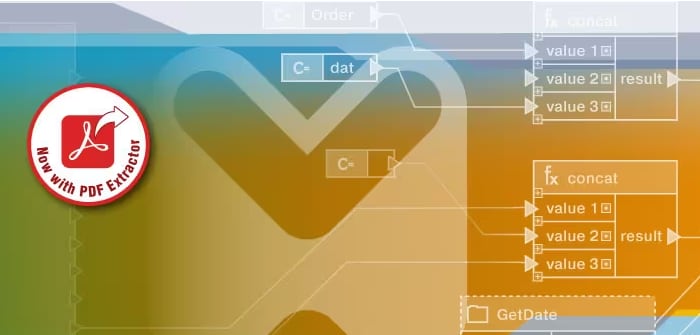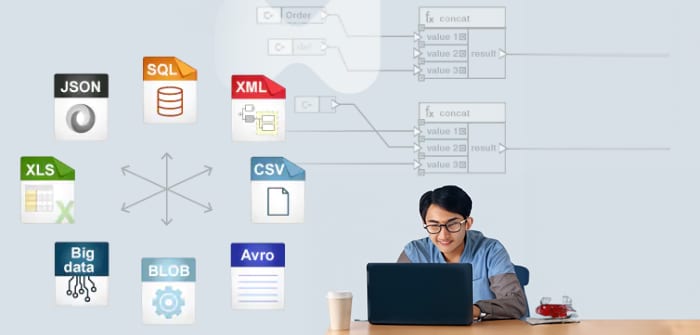Fall is bringing cooler temps, shorter days, and beautiful foliage to us here in the Eastern US and parts near and far. As we celebrate the changing season with fresh apple cider and warm sweaters, we’ve also been working hard to deliver Altova Software Version 2012. This year, Altova’s fall release brings support for HTML5 and CSS3, enhanced functionality for ETL applications, new Java-friendly options, Model Driven Architecture, and more, to the MissionKit software tool suite.  Let’s take a look at the new features in detail here, starting with tools that help developers and designers take advantage of HTML5 to create more sophisticated Web pages and apps.
Let’s take a look at the new features in detail here, starting with tools that help developers and designers take advantage of HTML5 to create more sophisticated Web pages and apps.
HTML5 and CSS3
The latest version of the lingua franca for publishing content on the Web includes numerous improvements, from enhanced handling of multimedia content to increased interoperability. As Web developers transition to HTML5, they’ll need an intelligent HTML editor that can provide context-sensitive editing guidance and other time-saving features. XMLSpy 2012 adds support for HTML5 in its HTML editor with entry helpers and drop down menus that offer valid choices based on your cursor location, and an integrated Browser View. It’s also lightning fast to test your edits in multiple browsers directly from the HTML editor. Other features such as integrated project management and support for popular version/source control systems – as well as SharePoint® Server support – make XMLSpy a powerful tool for HTML development.  For web designers and developers looking to create HTML5 pages from XML, database, or even XBRL content using a graphical, drag and drop design tool, StyleVision 2012 also supports HTML5 for creating stylesheets and reports. Both XMLSpy 2012 and StyleVision 2012 also support CSS3 styles to complement the new HTML5 functionality.
For web designers and developers looking to create HTML5 pages from XML, database, or even XBRL content using a graphical, drag and drop design tool, StyleVision 2012 also supports HTML5 for creating stylesheets and reports. Both XMLSpy 2012 and StyleVision 2012 also support CSS3 styles to complement the new HTML5 functionality.
Enhanced functionality for ETL
The MapForce 2012 data mapping tool now supports streaming reading of files, a crucial feature for ETL (Extract/Transform/Load) applications. When executing data mapping projects, the built-in MapForce engine can now read extremely large XML, CSV, and FLF files and create correspondingly large output streams. MapForce can even theoretically read an entire relational database in a single pass and generate an XML or other output file at once. This new support makes MapForce a highly effective, lightweight, and scalable tool for ETL. It’s also uniquely affordable, whether purchased as part of the MissionKit tool suite or individually.
New options for Java developers
The Altova MissionKit is designed to support users in their preferred development environment, whatever that may be. To that end we’ve added some new Java-friendly options, including support for JDBC database drivers in all database-enabled products.  We’ve also introduced a completely redesigned, native Java API for automating the functionality of Altova MissionKit tools in custom applications. This revamped Java API joins the existing COM API, and the products also ship with code samples in various programming language to get you started using the APIs right away.
We’ve also introduced a completely redesigned, native Java API for automating the functionality of Altova MissionKit tools in custom applications. This revamped Java API joins the existing COM API, and the products also ship with code samples in various programming language to get you started using the APIs right away.
Model Driven Architecture (MDA)
In response to requests from our UModel customers, we’ve added support for MDA in Version 2012 of our UML modeling tool. Utilizing a Model Driven Architecture approach to software engineering in UModel provides two primary advantages:
- During the design phase, developers do not need to be concerned with the details and variations between software languages
- An existing UModel project can be transformed from one source code language to another. For instance, a UML model for a C# application can become a Java or Visual Basic project
 Model Transformation can even be applied to projects that are reverse engineered from existing source code. For instance, an existing Java application can be reverse-engineered by UModel to create a UML model that can be transformed to generate C# classes.
Model Transformation can even be applied to projects that are reverse engineered from existing source code. For instance, an existing Java application can be reverse-engineered by UModel to create a UML model that can be transformed to generate C# classes.
Upgrade info
Check out the rest of the features added in the MissionKit 2012. This new version is free to download and install for customers with Support and Maintenance. If you’re not already a customer, you can download a free, fully functional 30-day trial.










